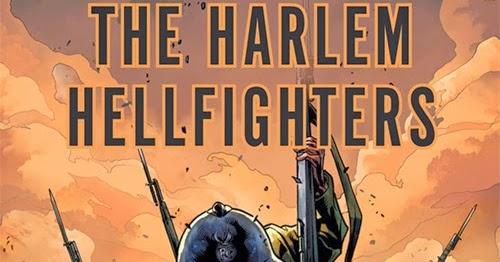

The blurred line between fact and fiction is the book's greatest strength - and weakness. His fact-finding mission paid off in his attention to historical detail, like the nicknames the soldiers gave to each type of German artillery or the specific type of gas used on the battlefield. Their story of bravery, sacrifice and perseverance remained long overlooked in favor of other black wartime heroes like the Tuskegee Airmen and the Buffalo Soldiers.įor over two decades, Brooks (son of Mel Brooks and Anne Bancroft) researched the Hellfighters' story. Extraordinarily, these soldiers spent longer in combat than any other American unit, white or black. The 369th Infantry Regiment, nicknamed the Harlem Hellfighters, was an African American unit that fought for the US Army in WWI despite discrimination at home. It is Canaan White's stunning illustrations of gassed-out trenches and a corpse-strewn no-man's-land that define this book about a heroic but long forgotten black regiment in World War I. "Everybody's head high, and we were all proud to be Americans, proud to be black, and proud to be in the 15th New York Infantry.Any review of Max Brooks' graphic novel The Harlem Hellfighters should really be conveyed in pictures.

And the band was playing," Miller told an interviewer for the 1977 documentary Men of Bronze. "That day, the sun was shining, and we were marching. Decades after World War I, he could still recall marching through formerly German-occupied territory. Melville Miller was 16 when he joined the Harlem Hellfighters, which was first formed as the 15th New York National Guard regiment.


'Proud To Be Americans, Proud To Be Black' There really was the weight of the world on all their shoulders." The officers had to prove their intelligence and their courage. "Everybody had so much to prove on every level. " were shocked at how willing the Americans were to charge into the face of death," Brooks explains. Still, Sanders adds that some French officers doubted whether the African-American soldiers had enough courage to go into battle. The French army absorbed the Hellfighters to help replenish their own ranks, finally giving them the opportunity to fight that the U.S. " did not think that African-Americans had the intelligence to think clearly," Brooks says. Instead, they, and other African-American soldiers, were put to work unloading ships. Army kept them from marching to the front lines in France. Their training prepared them for combat, but racial segregation in the U.S. Reginald Sanders, former commander of the 369th Sustainment Brigade, and The Harlem Hellfighters author Max Brooks tour the 369th Regiment Armory in New York City.


 0 kommentar(er)
0 kommentar(er)
